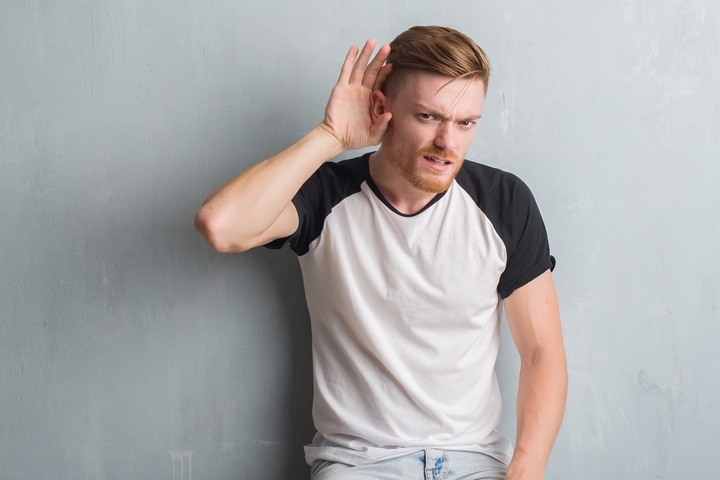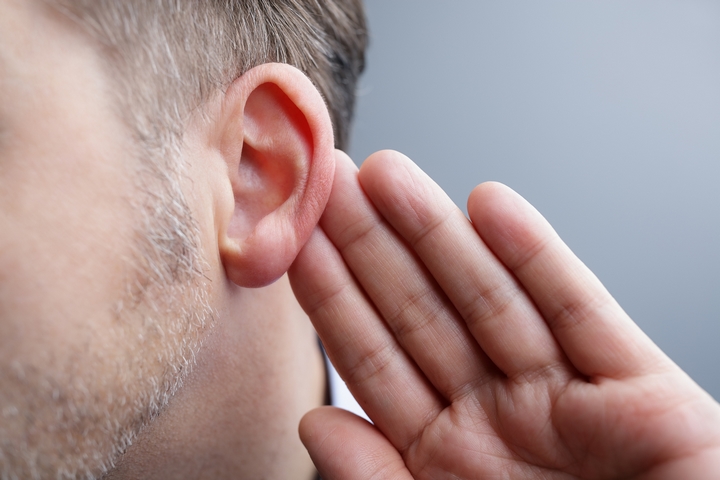There are different types of hearing loss which can affect a person. There’s auditory processing disorder hearing loss, conductive, sensorineural, and mixed. Each of these come with their own challenges. When hearing loss becomes severe enough, the need to wear a hearing aid may be necessary, as advised by your audiologist.
Hearing loss impacts each person in a different way, but there are some common symptoms shared by people afflicted with the same condition. We will list out the different types of hearing loss and their symptoms.
Type #1: Auditory processing disorders
 When the brain has problems processing sound information, such as speech, and are unable to determine where the sounds are originating from, this is an auditory processing disorder. APD sufferers have great difficulty in understanding what they hear.
When the brain has problems processing sound information, such as speech, and are unable to determine where the sounds are originating from, this is an auditory processing disorder. APD sufferers have great difficulty in understanding what they hear.
These types of hearing loss can understandably be very frustrating. The brain has the natural ability to selectively focus on sounds coming from a certain direction while suppressing unrelated sounds.
The most common symptom is being unable to understand conversations over background noise. Unlike other hearing loss, APD can occur infrequently which can make it difficult to diagnose.
Type #2: Conductive hearing loss
 Conductive hearing loss occurs when the outer ear or middle ear is interfering with sound passing to the inner ear. Things like an ear infection, an abundance of earwax, abnormal bone growth in the middle ear, a punctured eardrum, or fluid build-up all fall into this category.
Conductive hearing loss occurs when the outer ear or middle ear is interfering with sound passing to the inner ear. Things like an ear infection, an abundance of earwax, abnormal bone growth in the middle ear, a punctured eardrum, or fluid build-up all fall into this category.
Conductive hearing loss is more typical in indigenous populations and children. To treat it, surgery may be recommended. There are also hearing technologies such as bone conduction hearing aids, middle ear implants, and bone anchored hearing devices.
Type #3: Sensorineural hearing loss
 Sensorineural hearing loss is when electrical information cannot be sent to the brain due to a damaged or malfunctioning cochlea, or difficulties with the auditory nerve. Contrary to other hearing loss types, sensorineural hearing loss is typically permanent. These types of hearing loss can be caused by many things, including some genetic factors being at play, the natural aging process, exposure to diseases, exposure to loud noise, and/or is affected by certain chemicals or medications.
Sensorineural hearing loss is when electrical information cannot be sent to the brain due to a damaged or malfunctioning cochlea, or difficulties with the auditory nerve. Contrary to other hearing loss types, sensorineural hearing loss is typically permanent. These types of hearing loss can be caused by many things, including some genetic factors being at play, the natural aging process, exposure to diseases, exposure to loud noise, and/or is affected by certain chemicals or medications.
There are hearing aid technologies which can help in managing the condition, including employing hearing aids, cochlear implants, hybrid cochlear implants, and more. There are also several different subcategories of hearing loss under sensorineural hearing loss.
Type #4: Mixed hearing loss
 Mixed hearing loss is when there are elements of conductive hearing loss and sensorineural hearing loss present. As understood, any sort of sensorineural loss is permanent while the conductive element can either be permanent or temporary. For example, a person with hearing loss from presbycusis could also have an ear infection resulting in aggravated effects.
Mixed hearing loss is when there are elements of conductive hearing loss and sensorineural hearing loss present. As understood, any sort of sensorineural loss is permanent while the conductive element can either be permanent or temporary. For example, a person with hearing loss from presbycusis could also have an ear infection resulting in aggravated effects.
Type #5: Presbycusis
 Presbycusis is the common form of sensorineural hearing loss and is caused by the aging of the auditory system. It happens gradually and initially affects high frequency sounds.
Presbycusis is the common form of sensorineural hearing loss and is caused by the aging of the auditory system. It happens gradually and initially affects high frequency sounds.
Presbycusis is a progressive type of hearing loss. Eventually, a person will struggle to hear lower frequencies as well. Someone with presbycusis may complain someone is not speaking loud enough or clearly enough, may have trouble understanding conversation in noisy environments, and more.
Approximately 40 percent of people over the age of 65 have some form of presbycusis. This number is expected to rise with the soaring popularity in the past few decades of headphones, earbuds, and in-ear audio devices.
Type #6: Noise-induced hearing loss
 Noise-induced hearing loss is a subcategory of sensorineural hearing loss and is permanent. These types of hearing loss can result from single exposure to an intensely loud sound, such as an explosion or through prolonged exposure to loud noises. Noise-induced hearing loss occurs because the hearing is overstimulated and thereby, the nerve hair cells and supporting structures meant to sense sound are damaged.
Noise-induced hearing loss is a subcategory of sensorineural hearing loss and is permanent. These types of hearing loss can result from single exposure to an intensely loud sound, such as an explosion or through prolonged exposure to loud noises. Noise-induced hearing loss occurs because the hearing is overstimulated and thereby, the nerve hair cells and supporting structures meant to sense sound are damaged.
Sometimes, noise-induced hearing loss can be temporary wherein hearing abilities return within 48 hours. Symptoms of any sort of hearing loss in this category are struggling to hear high pitched sounds, difficulty hearing conversations in noisy rooms, and the sounding of speech being muffled. If left untreated, hearing like this will continue to deteriorate.
Type #7: Auditory neuropathy
 Auditory neuropathy is also a subcategory of sensorineural hearing loss. It’s sometimes referred to as auditory neuropathy spectrum disorder or ANSD. This involves problems with the electrical signals passing from the ear to the brain. These types of hearing loss occur due to the nerve function not working correctly, with electrical impulses having their timing disrupted. The result is distorted sound.
Auditory neuropathy is also a subcategory of sensorineural hearing loss. It’s sometimes referred to as auditory neuropathy spectrum disorder or ANSD. This involves problems with the electrical signals passing from the ear to the brain. These types of hearing loss occur due to the nerve function not working correctly, with electrical impulses having their timing disrupted. The result is distorted sound.
The most common auditory neuropathy is present from birth and is usually the result of trauma. There are also progressive forms of auditory neuropathy, related to neurological diseases known to affect various neural systems in the body.
Type #8: Unilateral hearing loss
 Unilateral hearing loss is when there is hearing loss in one ear and normal hearing in the other. Alternative to bilateral hearing loss, which is both ears, unilateral hearing loss still means a person can understand and respond to normal conversation, interpret environmental sounds, demonstrate normal speech, and still have adequate language development.
Unilateral hearing loss is when there is hearing loss in one ear and normal hearing in the other. Alternative to bilateral hearing loss, which is both ears, unilateral hearing loss still means a person can understand and respond to normal conversation, interpret environmental sounds, demonstrate normal speech, and still have adequate language development.
With that said, individuals with unilateral hearing loss may have trouble with conversation on the impaired side, localizing sound, and have trouble understanding speech in the presence of background noise or in a large, open space. Causes of unilateral hearing loss include physical trauma, a maternal prenatal illness, meningitis, Ménière’s Disease, mumps, and there’s also a genetics factor which can’t be forgotten.

